Fast, Cheap, and Easy – Bridge Standardization and New Technologies
Look-alike, cookie-cutter bridges may be little admired today, but in postwar America they signaled the arrival of a new, fast-moving world of limited-access highways and modern technology.
Dramatically increased auto and truck use demanded an improved transportation system, and bridges were part of the solution. Where bridges had previously been designed as engineering and architectural statements, bridges of the 1950s and 60s existed for a purely functional role of serving the new highways.
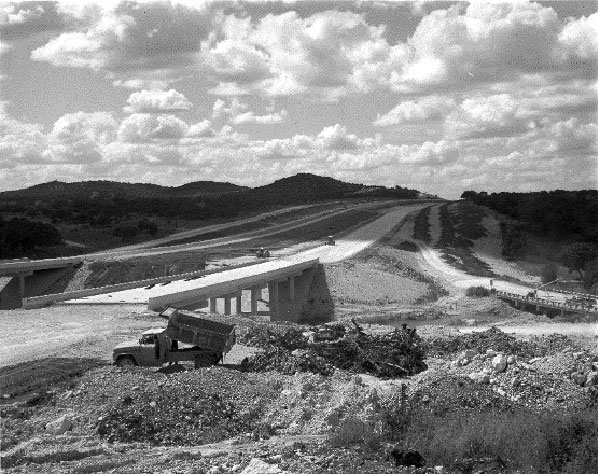
Functional bridges constructed along Texas Interstate 10 were an integral part of this new limited access highway.
(image courtesy of the Texas Department of Transportation.)
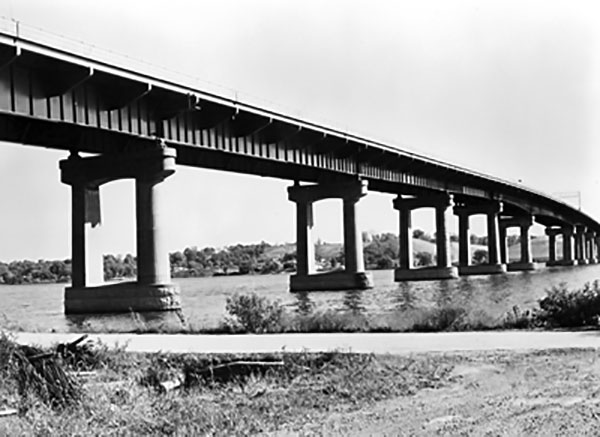
State Departments of Transportation used standard plans for construction of many types, including this steel fabricated girder.
(image courtesy of FHWA.)
After World War II, the Interstate Highway program and new technologies significantly accelerated the use of national standards that had guided engineers since the 1910s. In the 1950s and 60s the Bureau of Public Roads issued standard bridge plans that promoted new materials and designs while dropping obsolete types. The American Association of State Highway Officials (AASHO, later the American Association of State Highway and Transportation Officials, or AASHTO) also provided specifications and guidelines for State Departments of Transportation in the postwar era and to the present.
Because Interstate construction moved so fast and extended across the country, the associated new standards and efficient techniques influenced bridge practices everywhere. As a national system, the Interstate transcended traditional local and State differences, leading to increased uniformity for roads. New State and regional highways were wider to accommodate increased traffic traveling at faster speeds, and incorporated consistent safety features like shoulders, guardrails, and medians. The limited-access highway design gained popularity and demanded countless new bridges to eliminate road crossings and create interchanges. This resulted in the use of new bridge designs beyond the Interstate on roadways that were newly built or improved nationwide during this time.
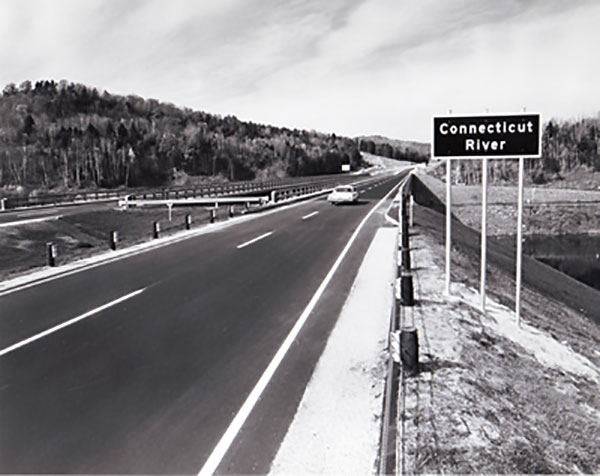
National standards by AASHO (later AASHTO) accommodated increased traveling speeds and new safety features, like shoulders, guardrails, and medians.
(image courtesy of FHWA.)
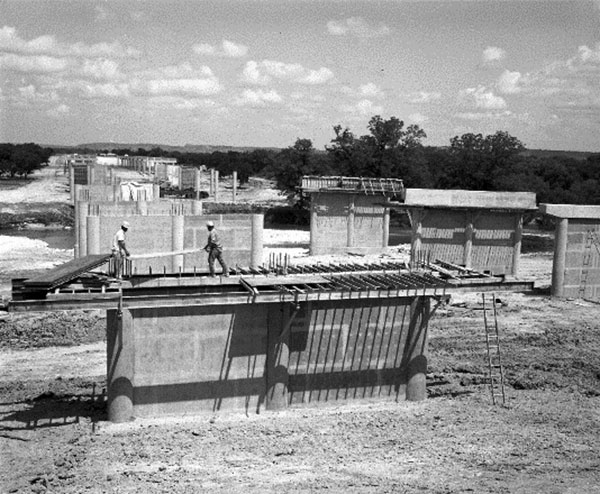
Replicated pier design accelerated construction of bridges for the new Interstate system.
(image courtesy of Jack Lewis of the Texas Department of Transportation Archive.)
Why not use the same design everywhere and save time and money? Construction speed and efficiency led to more bridges being built faster as designers and contractors benefited from the use of standardized components. Simple beam spans of steel or prestressed concrete predominated, and were replicated over and over in uniform span lengths for use on both new and improved roads. With their simple form, these spans blended easily into the postwar landscape where standardization had become a virtue.
A postwar preference for design austerity, combined with accelerated construction schedules, had also reduced concerns with aesthetics in bridges. The grand, Neoclassical style bridges of the 1920s and 1930s that served as urban gateways or memorials to civic leaders gave way to strictly functional bridges constructed as efficiently and economically as possible.
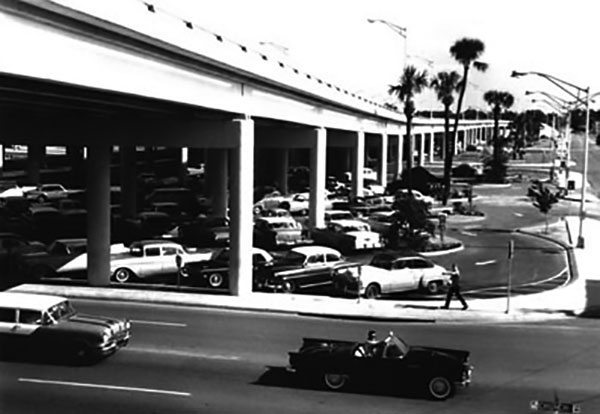
Preference for austerity in bridge design helped bridges blend into the urban environment.
(image courtesy of FHWA.)
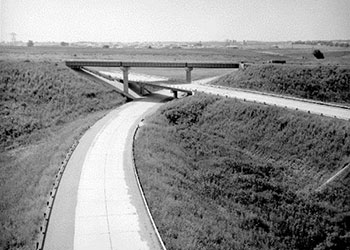
New interchanges were designed to accommodate seamless transitions between roads.
(image courtesy of the Nebraska Department of Roads.)
For safety reasons, engineers determined that drivers should not be distracted by bridges. Not only was simplicity a good fit with safety and construction economy, it also aligned with the national desire for smooth and uncomplicated high-speed auto travel across the countryside.
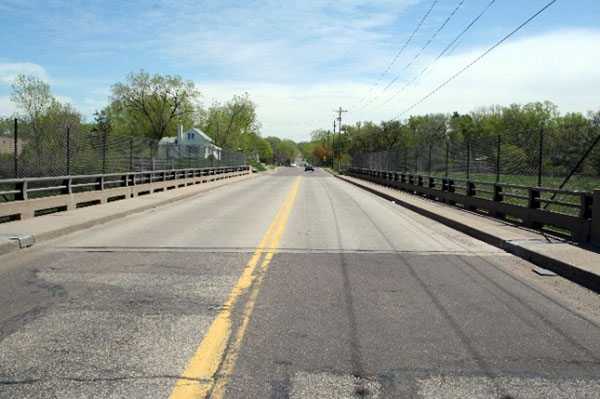
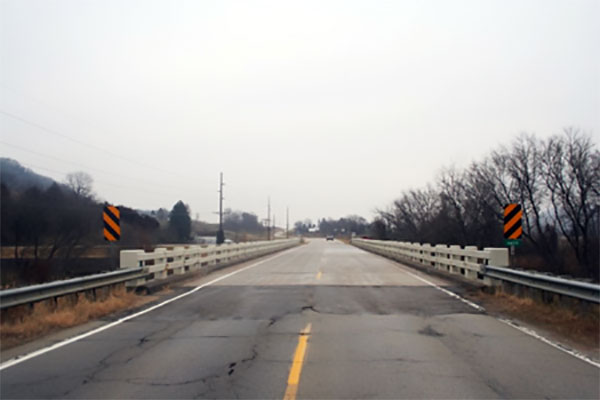
Designers favored simple and unobtrusive types so as to not distract drivers (HAER MN-121 left and HAER MN-124 right).
(images courtesy of Mead & Hunt, Inc.)
At the same time that simplicity flourished, increasingly complex interchanges obliged engineers to design bridges that followed the curves, twists, and elevations of on- and off-ramps in cloverleafs. Introduced in the 1950s, room-sized computers handled the calculations of these new “flyover” bridges, while advances in steel welding allowed beam shapes to follow the engineers’ computer-calculated designs. The computer also freed engineers from time-consuming design calculations to work on other issues.
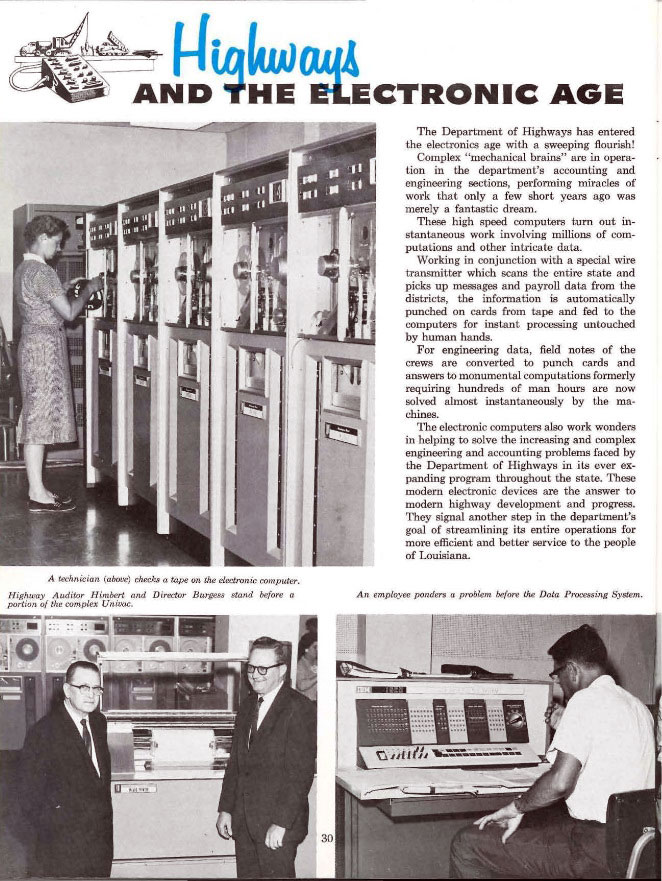
Many States embraced computers in the early 1960s to aid in designing roads and bridges.
(image courtesy of the Louisiana Department of Transportation.)

